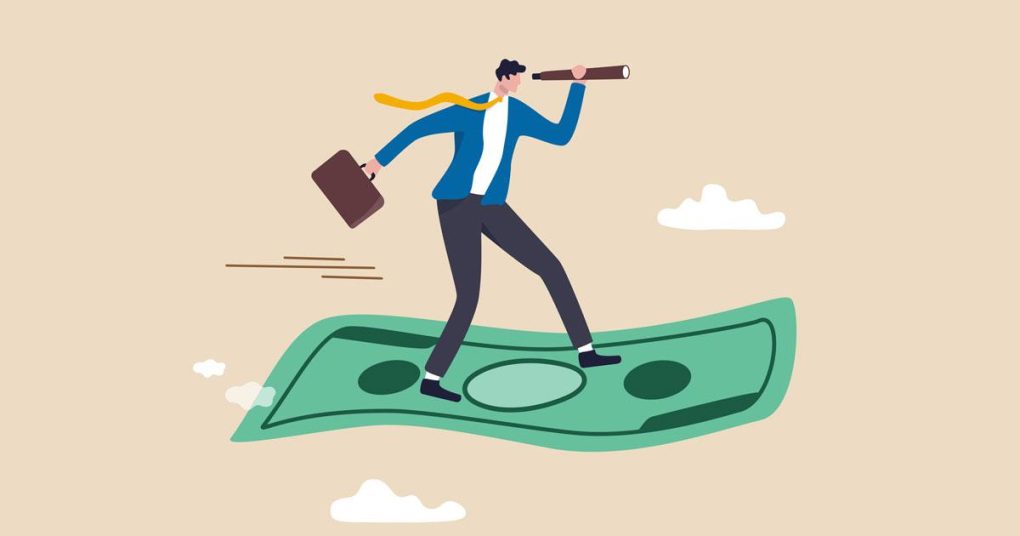
We reside in the age of rampant (monetary and price) inflation, more regular economic crises, chronic deficit spending, unpayable financial obligation, and enormous monetary bubbles. That’s not unexpected. That’s substantial.
This reality and the numerous financial, social, and even cultural effects of our fiat money system remain mostly unknown to most of people. The United States dollar ended up being a fiat currency by deceit and not due to the merit of fiat money or by free option.
So much so that economist Jacques Rueff entitled his book The Monetary Sin of the West (1971) in referral to the Bretton Woods gold exchange standard, which was not even a full fiat cash system.
What is fiat money? you may ask. Basically, it is an inconvertible or unbacked currency usually released by the government/central bank. Fiat cash is currency of limitless supply.
The word fiat originates from Latin and means “let it be done,” utilized in the sense of a federal government order and decree. Another keyword here is inconvertible. Notice that fiat emerged from paper currency no longer being redeemable for silver and gold.
The United States dollar, euro, and all national currencies today are fiat. Therefore they can be quickly and “endlessly” produced, printed, if you choose. In addition to that, due to the fact that of fractional reserve banking, business banks also produce big amounts of cash by lending it into presence– artificial credit expansion.
A Quick Wrap-up
For context, let me quickly describe how the Bretton Woods gold exchange system morphed into the international fiat dollar requirement.
Bretton Woods is the name the allied nations, led by the United States, provided to the monetary system they designed to govern global trade after World II due to the fact that the conference took place in Bretton Woods, New Hampshire, in 1944.
Participating countries concurred that the United States dollar would be backed by gold at a fixed currency exchange rate of $35 per ounce, and that, in turn, other currencies would be connected to the dollar. Thus the name “gold exchange requirement” instead of the classical gold standard.
This is how the United States dollar became the world’s reserve currency. On the promise to be the bridge, or the link, in between gold and all other currencies.
Notification, nevertheless, that under this arrangement, only federal governments and central banks could redeem (convert) paper currency for gold. Neither residents nor companies were allowed to. Which is a huge warning.
Because governments are not particularly known for sincerity and working out fiscal discipline, as time passed and in order to keep financing its ever-growing costs programs, chief amongst them war and an expanding welfare state, the United States found itself printing more dollars than it might back with gold.
Observing this, a handful of European nations appropriately started to doubt the US’s capability to keep its gold convertibility dedication due to the increasing currency creation (financial inflation). This led some countries, France in particular, to start redeeming their paper dollars for gold. Other nations did the same.
As pressure to redeem mounted, the Nixon administration on August 15, 1971, unilaterally ended the dollar’s convertibility to gold– the extremely thing that offered the dollar stability, reliability, and international approval. Nixon revealed:
I have actually directed Secretary Connally to suspend briefly the convertibility of the dollar into gold or other reserve properties, except in amounts and conditions figured out to be in the interest of financial stability and in the best interests of the United States.
In more candid words, the US federal government defaulted and broke its guarantee to exchange gold for dollars. That’s how we wound up with today’s global fiat money system– the dollar standard.
Plus the rampant financial, financial and financial instability; tyranny; and injustice that includes a fiat money system.
Twenty twenty-one marked the fiftieth anniversary of this “short-lived” suspension and hence of the global fiat money system. And in spite of the aggravating socioeconomic situation, given today’s common financial thinking, it is hard, perhaps impossible, to envision the United States bring back any sort of link between the dollar and gold in the foreseeable future.
It deserves keeping in mind that the “crime of ’71” was simply the final blow versus ethical and sound cash and the last step in the journey to fiat cash, which, in my view, started in 1913, with the establishment of the existing US reserve bank, the Federal Reserve System.
Today’s global fiat cash system, the dollar standard, originated from government hoax and deceptiveness by self-serving political leaders serving special interest groups, who colluded to cause a complete fiat cash system. To the advantage of the ruling elites and in hinderance to everyone else.
Now expect the American public, back in 1971, had actually been well notified and knowledgeable about the insidiously destructive nature of fiat money. Would they have enabled their federal government to make the dollar a fiat currency?
The truth is humanity lives under a fiat cash system. But as sound economics programs and history proves, fiat money is an undependable and imperfect form of money that constantly comes to an economically and socially harmful end.

